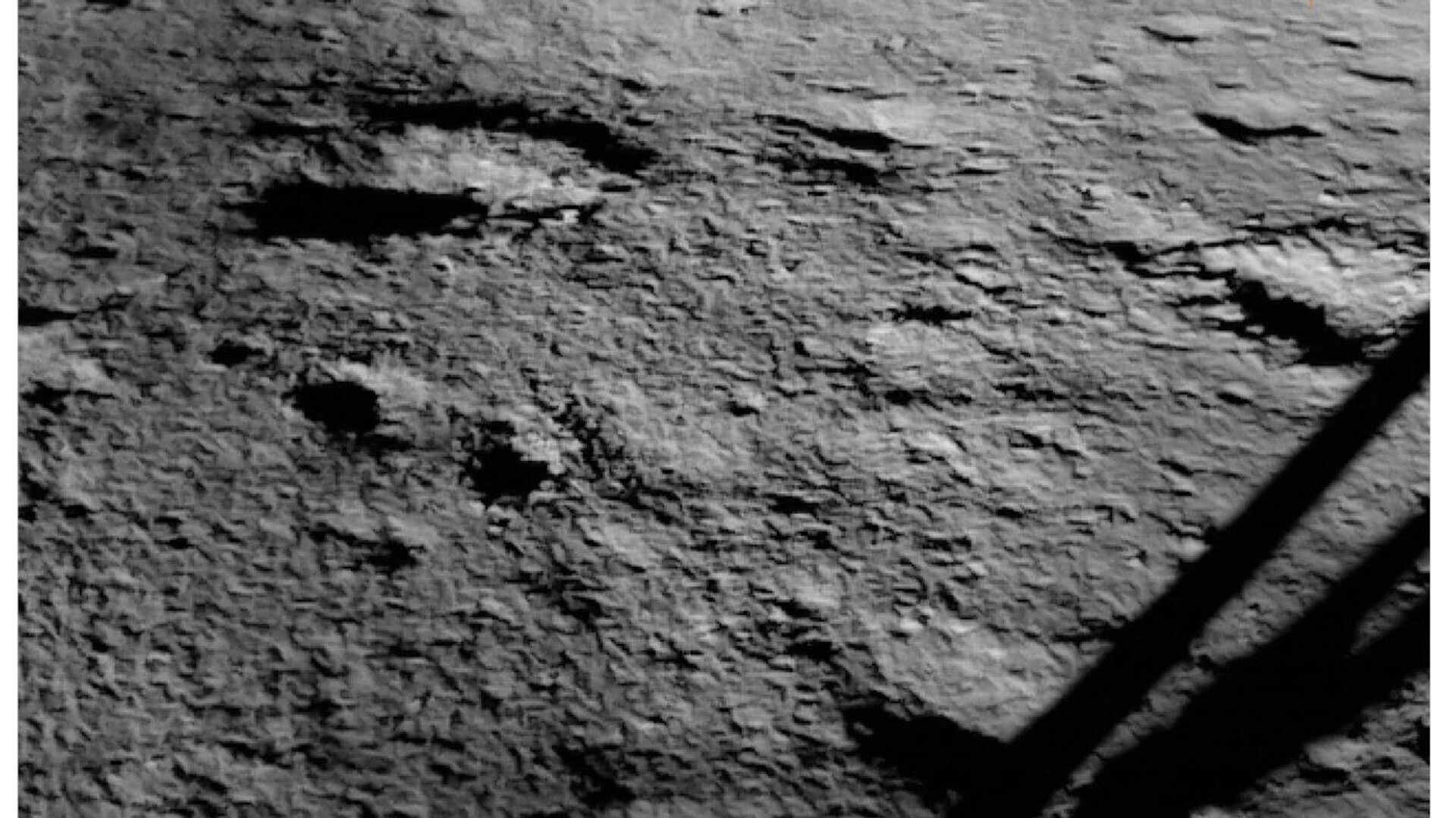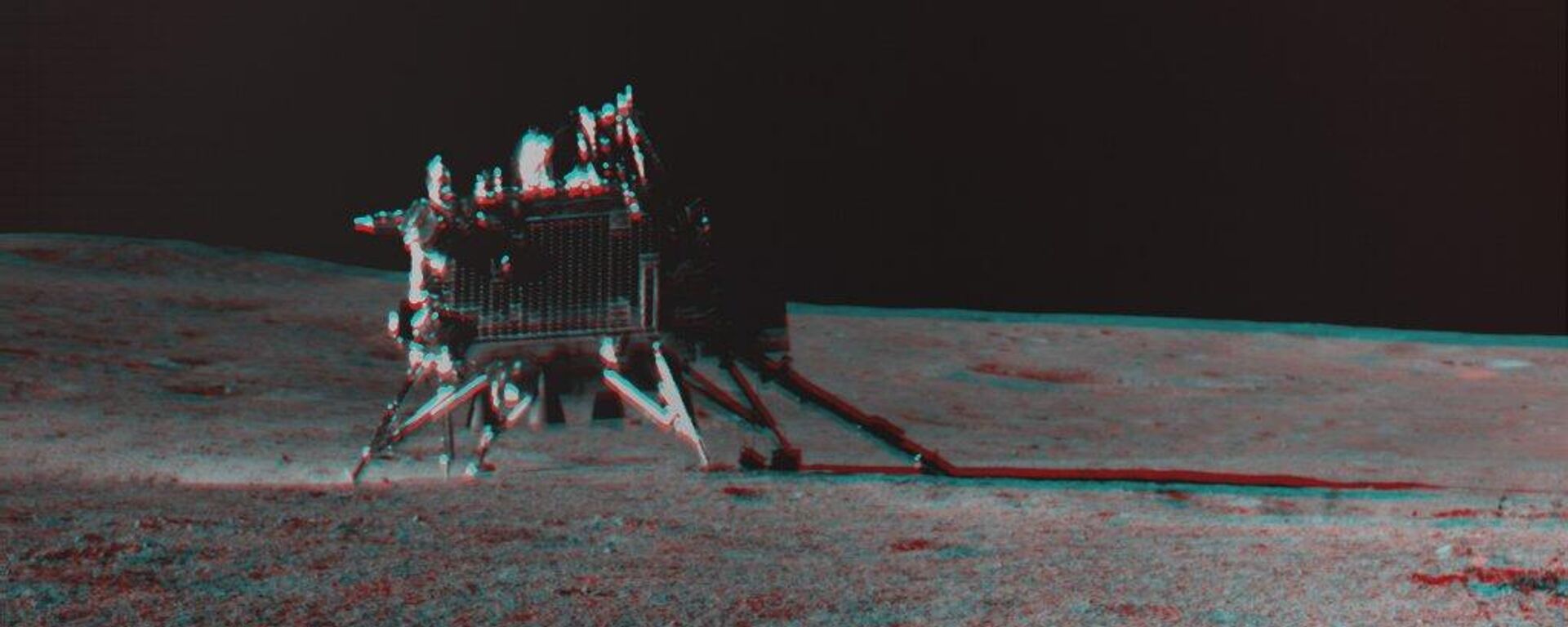https://sputniknews.in/20230925/scientists-explain-why-chandrayaan-3-left-no-imprint-on-moons-surface-4431970.html
Scientists Explain Why Chandrayaan-3 Left No Imprint on Moon's Surface
Scientists Explain Why Chandrayaan-3 Left No Imprint on Moon's Surface
Sputnik India
The day after Chandrayaan's module made a soft landing on the moon, the Indian space agency shared that the rear wheels of the rover Pragyaan, imprints of the national emblem of India, which depicts the Lion Capital of Ashoka at Sarnath and the official logo of ISRO.
2023-09-25T18:58+0530
2023-09-25T18:58+0530
2023-09-25T18:58+0530
science & tech
science & tech
india
moon
russia
indian space research organisation (isro)
space satellite
space industry
space exploration
space rocket
https://cdn1.img.sputniknews.in/img/07e7/08/18/3796732_0:192:1375:965_1920x0_80_0_0_bb56847a657866a4c717beab96106cce.jpg
Just after Chandrayaan's module made a soft landing on the Moon, the Indian space agency announced that the rear wheels of the rover Pragyaan would leave imprints of India's national emblem and the official logo of the Indian Space Research Organisation (ISRO).The idea was praised by Indians around the world and also seen as an attempt by the ISRO to confirm its presence of the rover on the lunar surface.However, the latest published news reports said that Pragyaan's rear wheels have been unable to leave a clear imprint on the moon.Explaining the possible reason for the rover failing to leave an imprint, Dr Mylswamy Annadurai, former Director of ISRO's satellite-building facility, UR Rao Satellite Centre, told Indian news channel Wion that Pragyaan is a six-wheeled rover that weighs 26kg on Earth and 4.5kg on the Moon.Annadurai, who is also known as the Moon Man of India, suggests that the low lunar mass of the rover could have prevented the clear imprints from appearing. A heavier rover could leave a better and much more noticeable impression.The scientist said that during the rover's tests on Earth, they created an artificial lunar soil test bed, which was modelled according to the details of the Apollo 11 landing site, which is at the equatorial region of the moon.However, Chandrayaan landed on the South Pole of the moon. While testing the Chandrayaan 2 and Chandrayaan 3 rovers, the wheels left an imprint on the soil, and he added that when a clear print is not seen, it could be because the nature of the soil near the Chandrayaan-3 landing site is different.However, he stressed that the mass of the rover plays a very important role, and other factors include how much the rover wheel treads can penetrate the lunar soil.
https://sputniknews.in/20230922/chandrayaan-3-isro-postpones-revival-of-lander-vikram-and-rover-pragyan-4386856.html
india
moon
russia
Sputnik India
feedback.hindi@sputniknews.com
+74956456601
MIA „Rossiya Segodnya“
2023
Deexa Khanduri
https://cdn1.img.sputniknews.in/img/07e6/0c/13/138923_52:0:533:481_100x100_80_0_0_cadf23d341691fc65ff2b22fd1afe584.jpg
Deexa Khanduri
https://cdn1.img.sputniknews.in/img/07e6/0c/13/138923_52:0:533:481_100x100_80_0_0_cadf23d341691fc65ff2b22fd1afe584.jpg
News
en_IN
Sputnik India
feedback.hindi@sputniknews.com
+74956456601
MIA „Rossiya Segodnya“
Sputnik India
feedback.hindi@sputniknews.com
+74956456601
MIA „Rossiya Segodnya“
Deexa Khanduri
https://cdn1.img.sputniknews.in/img/07e6/0c/13/138923_52:0:533:481_100x100_80_0_0_cadf23d341691fc65ff2b22fd1afe584.jpg
chandrayaan 3, chandrayaan 3 launch date, chandrayaan, chandrayaan-3, chandrayaan-3 launch date, chandrayaan 3 upsc, photos of chandrayaan, india moon mission, india's moon mission, moon mission, pragyan rover, what is vikram lander and pragyan rover, what chandrayaan will do on moon, is chandrayaan sucessful, vikram moon rover, चंद्रयान-3
chandrayaan 3, chandrayaan 3 launch date, chandrayaan, chandrayaan-3, chandrayaan-3 launch date, chandrayaan 3 upsc, photos of chandrayaan, india moon mission, india's moon mission, moon mission, pragyan rover, what is vikram lander and pragyan rover, what chandrayaan will do on moon, is chandrayaan sucessful, vikram moon rover, चंद्रयान-3
Scientists Explain Why Chandrayaan-3 Left No Imprint on Moon's Surface
Deexa Khanduri
Sputnik correspondent
On 23 August, India became the fourth nation to achieve a soft landing on the Moon after Russia, the US, and China.
Just after Chandrayaan's module made a soft landing on the Moon, the Indian space agency announced that the rear wheels of the rover Pragyaan would leave imprints of India's national emblem and the official logo of the Indian Space Research Organisation (ISRO).
The idea was praised by Indians
around the world and also seen as an attempt by the ISRO to confirm its presence of the rover on the lunar surface.
However, the latest published news reports said that Pragyaan's rear wheels have been unable to leave a clear imprint on the moon.
Explaining the possible reason for the rover failing to leave an imprint, Dr Mylswamy Annadurai, former Director of
ISRO's satellite-building facility, UR Rao Satellite Centre, told Indian news channel Wion that Pragyaan is a six-wheeled rover that weighs 26kg on Earth and 4.5kg on the Moon.
Annadurai, who is also known as the Moon Man of India, suggests that the low lunar mass of the rover could have prevented the clear imprints from appearing. A heavier rover could leave a better and much more noticeable impression.
The scientist said that during the rover's tests on Earth, they created an artificial lunar soil test bed, which was modelled according to the details of the Apollo 11 landing site, which is at the equatorial region of the moon.
However, Chandrayaan landed on the South Pole of the moon.
While testing the Chandrayaan 2 and Chandrayaan 3 rovers, the wheels left an imprint on the soil, and he added that when a
clear print is not seen, it could be because the nature of the soil near the Chandrayaan-3 landing site is different.
"Just like there is sandy, clayey and other varieties of soil on Earth, the same could be possible in different lunar regions," he said.
However, he stressed that the mass of the rover plays a very important role, and other factors include how much the rover wheel treads can penetrate the lunar soil.



